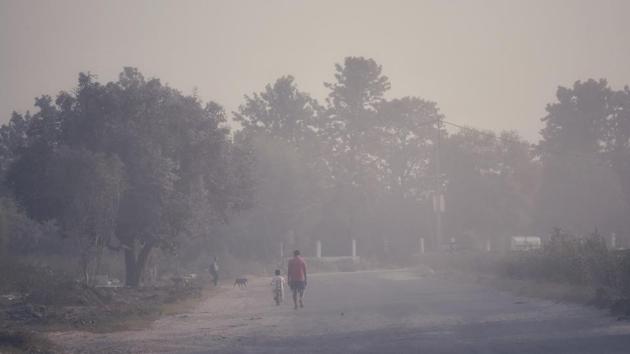Delhi’s air quality remains poor for the fourth consecutive day
Air quality enters poor zone between 201-300 mark. The average AQI has been in the poor zone for the past three days. On Friday the 24-hour average AQI was 202
Delhi’s air quality continued to remain in the ‘poor’ zone on Saturday morning, with the air quality index (AQI) at 217, as per Central Pollution Control Board (CPCB) data at 9am.

Air quality enters poor zone between 201-300 mark. The average AQI has been in the poor zone since Wednesday, when air quality plunged into the ‘poor’ zone for the first time since June 28. On Friday the 24-hour average AQI was 202.
The System of Air Quality and Weather Forecasting and Research (SAFAR), the central government’s air quality monitoring and forecast wing, said on Friday AQI is expected to remain in the poor category even though it could see a slight improvement on October 11 and 12.
Air quality takes a sharp downward turn every year from October onwards, when a drop in temperature, change in wind speeds and direction, and smoke from stubble burning in neighbouring states, apart from local sources of pollution, combine to make Delhi one of the most polluted cities in the world.
Also Read: Connaught Place will get smog tower in 10 months, says Kejriwal
“Air quality is set to improve on October 11 to moderate category. The low pressure system formed over the Bay of Bengal is likely to intensify and influence air circulation in north India. A shift in Delhi’s surface wind direction, from north-westerly to southeasterly is likely by October 12. This could influence air quality in the coming week. Stubble burning fires have been observed around Haryana, Punjab and neighbouring border regions,” it said.
According to experts, though faster winds play a major role in dispersing pollutants, they are not helping Delhi in the prevailing circumstances since winds are not strong through the day. Scientists at the India Meteorological Department, even though the average wind speed is 15-16 kmph during the day, the north-westerly winds bringing in fumes from stubble burning of crops in Haryana and Punjab is adding pollutants in the atmosphere to the northwestern region including Delhi-NCR. However, the wind speed is low from evening to morning -- thus, not allowing dispersion of pollutants -- and a drop in night temperature permits the pollutants to settle in the atmosphere.
Also Read: 80 per cent trees felled for infra work to be transplanted in Delhi
“The air quality may improve slightly on October 11-12 because of thunderous developments likely in the region. The wind direction will also change to southeasterly during this time. However, this pattern will again change from October 15, with a return of northwesterlies and a dip in both night and day temperatures,” said an IMD scientist.
On Friday, the minimum temperature settled at 19.2 degrees C, two notches below normal while the maximum temperature was at 35.2 degrees C, a notch above normal.
As measures to control air pollution, Delhi environment minister Gopal Rai had visited construction sites to check dust pollution. On Friday, chief minister Arvind Kejriwal had also announced that the government would install a smog tower in Connaught Place.
Stay updated with all top Cities including, Bengaluru, Delhi, Mumbai and more across India. Stay informed on the latest happenings in World News along with Delhi Election 2025 and Delhi Election Result 2025 Live, New Delhi Election Result Live, Kalkaji Election Result Live at Hindustan Times.
Stay updated with all top Cities including, Bengaluru, Delhi, Mumbai and more across India. Stay informed on the latest happenings in World News along with Delhi Election 2025 and Delhi Election Result 2025 Live, New Delhi Election Result Live, Kalkaji Election Result Live at Hindustan Times.






